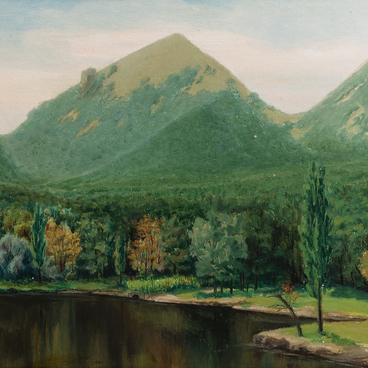The collection of the Vitaly Zakrutkin Memorial House-Museum features a unique exhibit. This long, dark, and extremely hard plate with fringes along the edge is a real whalebone. It was brought from India by the writer’s friends. They bought it at the market. The sellers offered it in response to the request to show their most exotic product.
The writer’s wife recalled, “V. A. Zakrutkin thanked for the gift but accepted it without much enthusiasm because he treated living creatures and especially these amazing animals, whales, with extraordinary reverence.” The gift remained in the writer’s office but was always kept in an inconspicuous place. Still, schoolchildren who came to Zakrutkin in large groups sometimes paid attention to this unusual dark object and asked the writer what it was.
The whalebone is located inside the mouth of whales. It is a flexible elastic plate on both sides of the upper jaw. A whale has from 130 to 400 of such plates. Along the edges of the plates in the mouth there are thin tubes that form bristles through which the whale takes in water and pushes out small animals. Whalebone is a very effective filtering system: it pushes out tons and tons of water, taking in the remaining two to four tons of food.
There are four families of baleen whales: gray, striped, right, and pygmy whales. Whalebone was used in sewing clothes and corsets as a material that helped give shape to the figure. Corsets for royalty were made of whalebone. They were durable and comfortable and were passed down from one generation to another. It took an entire kilogram of whalebone to make a corset. Whalebone was also used to make belts and sword knots for noblemen, whips and lashes for horses. Among the peoples of the north, whalebone was used for making a sled.
“We, reasonable and caring people, can and must
raise our voices in defense of these beautiful animals, and demand that
countries that allow whaling ban it completely, direct their efforts to raising
awareness, and cultivate humaneness in the people living on planet Earth,”
Zakrutkin said.


